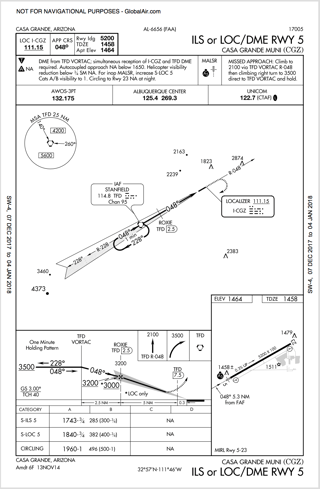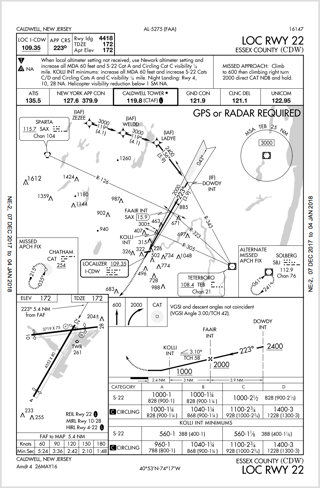I am training to get my instrument rating and I have come across a confusing point. I understand that, when flying a precision approach, you go missed upon reaching the decision height for that approach if visual reference to the runway environment is insufficient to complete the landing. I also understand that on a non precision approach you will descend to the minimum decision altitude for that approach and then fly at that altitude until you reach the missed approach point, after which you will go missed. My question is, how do you know when you've reached the missed approach point on a non-precision approach?
These three charts in particular confuse me:
In this approach, which has an option for either an ILS (precision) or LOC/DME (non-precision) approach, the beginning of the dotted line which signifies the missed approach path does not have any DME value or intersection information. There is an intersection after it at 7.5 DME. Which of these two points would be the missed approach point for the LOC/DME approach? How would you know when you reached the MAP if it is where the dotted line begins?
In this approach the dotted line which signifies the missed approach path seems to begin at the runway threshold. If this were the MAP, (with no localizer) would you have to start a timer after you cross KOLLI intersection to know you have gone 2.4nm and thus are over the runway threshold? Is the MAP actually at the beginning of the runway as it seems? Are there any ways of knowing you are at the MAP without a stopwatch?
Finally, this IAP is similar to the first. Unlike the first though, there is no DME intersection after or near the beginning of the dotted missed approach line. Is the MAP for the localizer approach here just at the beginning of the runway as it seems to be in the second approach? Again, would you have to use a stopwatch or are there any other ways?



